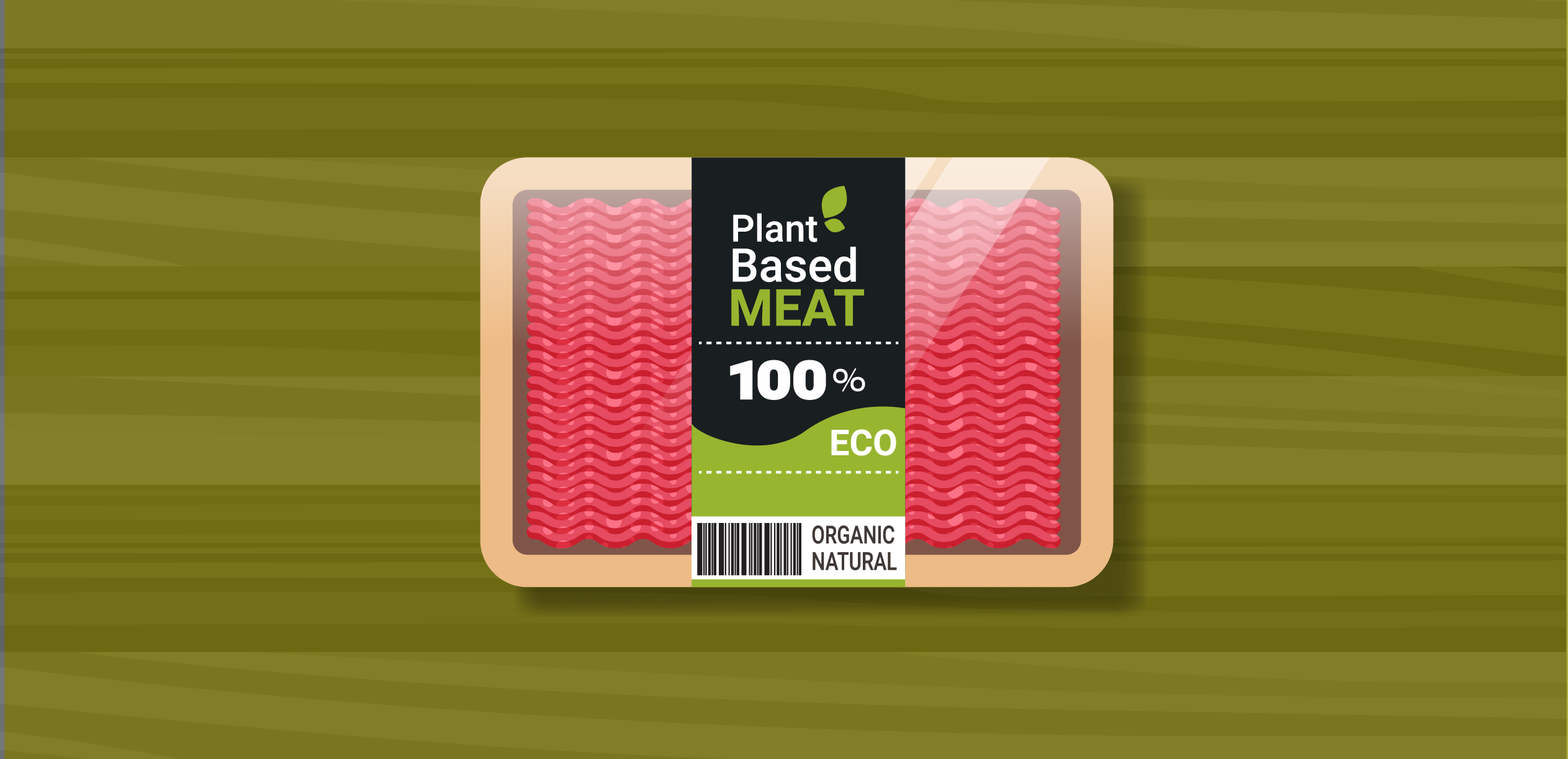In this post, we delve into regulatory issues relating to ‘cultivated meat products’ – which are cruelty-free products that are derived from animal cells, without harming or killing the animal.
Introduction
Today, agriculture uses nearly half the world’s vegetated land, comprises 90% of our water use and contributes to a quarter of global emissions to feed approximately 7 billion people. Every year, 50 billion chickens, 1.5 billion pigs and over 100 million tonnes of seafood are killed to feed a growing, increasingly wealthy human population that is projected to reach 10 billion by 2050. Increasingly, the ethical conundrum surrounding these unsustainable practices have assumed singular significance in popular discourse with critics pointing to the environmental harm and animal cruelty practices in the agriculture and poultry sectors. In this context, many are looking to cultivated meat as a panacea. Cultivated meat typically involves the extraction and multiplication of a muscle sample from an animal in an artificial environment to allow differentiation into a full muscle tissue. The animal does not need to be killed or even harmed for this. Alternative protein is a term used to describe substitutes to animal-based/derived food products such as meat, fish, eggs and dairy. Good Food Institute India defines alternative protein as products which can reliably and predictably substitute the consumption of animal-derived meat, eggs, and dairy, because they perfectly replicate the sensory and cultural experience for consumers and offer several advantages in the supply chain for producers. These fall into 3 main categories, namely – Plant based meat, eggs and dairy, cultivated meat and fermentation derived protein ingredients. In this piece, we delve into the regulatory issues surrounding cultivated meat.
The debate ‘for’ cultivated meat
Mosa Meat, a leading lab-grown meat startup, says a single tissue sample from a cow can produce 80,000 quarter-pounders. Proponents believe that this technology can reduce global emissions, mitigate environmental damage and continue to feed the human population. Cultivated meat production requires fewer natural resources than conventional meat, reducing water usage, and biodiversity loss. These benefits are uniquely relevant for India, a largely agrarian country with a growing population. While there are still several barriers for the sector to overcome, an effective regulatory framework remains key to maintaining safety standards, spurring innovation and winning consumer trust. On the demand side, alternative proteins provide an opportunity to obtain food security for India’s population without placing limited land and water resources under stress.
Technologies used to produce cultivated meat
There are four main technology elements to cultivated meat (source):
- Development of cell lines: There is a need for cells that can self-renew and differentiate (or a stem cell) into the cell types that make up meat tissue. The cells are processed further in order to sustain the cells’ capacity to proliferate continuously, thereby reducing the need to extract new cells.
- Cell culture media: Cells require nutrient media for growth. Cell culture is a liquid broth which contains salts, sugars, and amino acids as well as signaling molecules called growth factors.
- Scaffolding: To give shape to a tissue-structured piece of meat, the cells are arranged onto a scaffold material that provides a physical support structure to the cells as they differentiate and grow into specific cell types (muscle, fat, etc.).
- Bioreactors: A bioreactor is an apparatus that provides an artificial medium for organizations to grow (source). The entire process of cultivated meat production takes place in a bioreactor, from start (seed culture) to finish (harvesting an intact piece of meat).
Part I of this note provides insights into why there is a need for a regulatory framework for cultivated meat; part II gives an overview of the regulations governing this sector in jurisdictions such as the United States, European Union, Canada, Singapore, China, Australia and New Zealand. Finally, Part III deals with issues relating to nomenclature of cultivated meat products. The last section provides recommendations for a regulatory framework for cultivated meat in India.
Part I- Need for an enabling regulatory framework for cultivated meat
Reports indicate that the COVID-19 pandemic has enhanced interest in hygienic alternatives to the present factory farm-sourced meat in the markets. The pandemic has brought to the fore the health risks associated with meat markets and also laid bare the vulnerabilities of the current supply chain. China, in particular, has had its food supply chain hit on various occasions by virus outbreaks such as the African swine fever, Middle East respiratory syndrome coronavirus, multiple instances of avian influenza and most recently by COVID-19. In the United States, the COVID-19 pandemic caused meatpacking facilities to close down and thousands of livestock to be killed and disposed off instead of sent to the market. There exists a lot of optimism about the potential of the alternative protein sector to replace traditional meat products. Moreover, one of the foremost concerns of alternative proteins remains the question of safety for human consumption. This is buttressed by consumer perceptions that cultivated meat is ‘unnatural’ or ‘artificial’ and therefore unhealthy to consume. In another survey conducted in India, 25.5% of the sample were not familiar with cultivated meat; 35.8% were slightly or moderately familiar, and 38.7% were very or extremely familiar. Moving too soon in taking the cultivated meat product to the market runs the risk of having the same aspersions being cast on it that the traditional meat industry presently suffers from. India is also seeing developments in the cultivated meat space, the founder of Indian cultivated meat startup, Clear Meat has stated that he is optimistic that the FSSAI will come with a set of regulations for cultivated meat. Therefore, there is a need for an enabling regulatory framework for cultivated meat that fosters innovation and eliminates the regulatory uncertainty for entrepreneurs willing to work in this area.
Part II: Regulation
The cost of a cultivated meat burger has steadily been reducing over the years. In 2013, the cost was approximately USD 330,000. In 2018, an Israeli startup was able to bring the cost down to USD 360, with some estimate that it will soon be down to USD 2.30-4.50. Besides, two of the biggest traditional meat processors in the United States have invested money in cultivated meat startups. Therefore, it is clear that cultivated meats are raring to be launched in the market. The food technology sector was a nascent, relatively unregulated sector for the most part of the last decade. However, in the past few years several jurisdictions have recognized that effective regulation can spur growth. Here, we provide an overview of the present regulatory framework in the European Union, the United States, Canada, Singapore, China, Australia and New Zealand. In each of these countries, cultivated meat is regulated under the broader category of ‘novel food’. Therefore, we have used the term ‘novel foods’ below when referring to regulations in these countries.:
- European Union: The European Commission has a 2030 initiative to deliver a climate-smart and sustainable food system for Europe. Through a 2018 independent expert report, new meat alternatives including cultivated meat were held up as an important way to achieve this goal. Accordingly, an outdated 1997 EU regulation on ‘novel foods’ was replaced by Regulation 2015/2283 (“EU Regulation”). Food consisting of, isolated from or produced from cell culture or tissue culture derived from animals falls under the scope of the EU Regulation. It requires a pre-market authorization and subsequent inspection at certain stages of the production process for novel foods to be brought to the market. The pre-market authorisation of the novel food takes three conditions into account – (a) risk to human health, (b) whether intended use of the novel food misleads the customer, and (c) where the novel food is intended to replace an existing food, whether the novel food would be nutritionally inferior. The authorisations granted are generic, which means that once a novel food is authorized any food operator can market it subject to certain specified conditions. Such conditions include labelling requirements to advise consumers on risks of excessive consumption, conditions for safe use, composition and nutritional value. However,there is uncertainty about whether a generic authorization will be given to cultivated meat products manufactured by different companies, as products may have specific composition, features, and ingredients. The EU Regulation also allows the European Commission to impose certain post-market monitoring requirements in the interest of food safety. The Commission enjoys significant discretion in imposing these requirements on a case-by-case basis. These requirements are not exhaustively laid down in the EU Regulation but may include the identification of the relevant food business operators who are involved in the supply chain of any product that has been granted authorization. This is relevant because the authorisations, once granted, are generic in nature as previously noted. As such, the Commission is granted discretion to mould such requirements on a case-by-case basis. Cultivated meat is also required to adhere to safety and other requirements in EU food law.
- United States: On 7 March, 2019, the Food Safety and Inspection Service and the Food and Drug Administration entered into a formal agreement to jointly regulate production of food from the cells of livestock and poultry (“7 March Agreement”). As per the 7 March Agreement, the FDA will oversee cell culture and production and the U.S. Department of Agriculture has responsibility over the harvest of cultivated meat cells and production of cultivated meat products. Similar to the EU Regulation, the 7 March Agreement aims to ensure that only “safe, wholesome and unadulterated products” enter the market and it does so by requiring market players to obtain prior authorisation. However, unlike the EU, the US will also require pre-market consultation with regulators and additional eligibility checks such as at the stage of post-harvest cell processing and pre-approval of labelling of cultivated meat products. Although the March 7 Agreement gives FSIS labeling authority, the FDA and the USDA have yet to develop labeling requirements. In October 2020, the FDA had sought information relating to the labeling cultivated seafood to inform the FDA of the characteristics of cultivated seafood; and to help decide next steps to ensure that cultivated seafood is labelled properly. Cultivated meat companies and proponents argue that they should be allowed to label their products as ‘meat’. However, the traditional meat industry, represented by organisations such as the US Cattlemen’s Association, has lobbied to narrow the definition of meat to products that are derived from the carcass of an animal – arguing that not doing so would be misleading to consumers. Several US states have agreed with the traditional meat industry and prohibited or introduced bills seeking to prohibit cultivated meat products from being called ‘meat’. Only a federal body like the FDA can resolve the inevitable inefficiencies that will result from each state deciding this crucial question based on its own considerations.
- Canada: Canada’s Food and Drug Regulations has a broad definition of novel foods, that would include cultivated meat. Similar to the EU, Canada requires a pre-market notification from the government before any novel food is advertised or sold. The procedure involves writing to the government with information regarding the novel food including details about the production process; information relied on to establish that it is a safe food; details of processing, packaging, preparation and storage; its intended use and directions for preparation. Once the government is satisfied that the novel food is “safe for consumption” approval will be given. Canada does not currently have any of the other stringent requirements in relation to nutrition or additional checks and inspections that the US has.
- Singapore: The Singapore Food Agency (“SFA”) has issued a Guidance Document dated November 22, 2019 (which was updated in November 2020) (“SFA Guidance Document”) with specific guidelines for cultivated meat. It is intended to provide a better understanding of SFA’s requirements on safety assessment for novel foods. The SFA requires the following information for assessing a cultivated meat product: (i) A description of the overall manufacturing process; (ii) characterisation of the cultured meat product, including nutritional composition, and comparison of residual growth factors against levels in published literature; (iii)Information related to the cell lines used, including: Identity and source of cell lines, description of methods used for selection and screening of cells, information on how the cell lines are prepared and banked following their extraction from animals, description of the modifications and adaptations made to the cell lines, and how these relate to the expression of substances that may result in food safety risk; (iv)Information related to the culture media used; (v) information related to the scaffolding materials, if used, including: identities and purity of scaffolding materials used; and (vi) information on how the purity and genetic stability of cell culture is ensured during the manufacturing process; and (vii) safety assessment covering possible hazards arising from the manufacturing. In December 2020, the SFA approved the sale of a cultivated meat product in the city-state. According to the SFA companies selling pre-packaged alternative protein products in Singapore will be required to label the product packaging with qualifying terms such as “plant based” or “cultured” to indicate their true nature, so that consumers can make informed decisions when deciding whether to consume these products.
- China: In China, the Administrative Measures for the Safety Review of New Food Raw Materials requires a similar safety evaluation as required by the SFA in order to be used in food production and trading. Cultivated meat would fall within the ambit of ‘new food raw materials’ since the definition covers ‘ingredients extracted from animals, plants and microorganisms’ and ‘food ingredients the original composition of which has been changed’.
- Australia and New Zealand: The Food Standards Code has a provision on novel foods, which also requires compliance with certain conditions including safety, composition, labelling and preparation and cooking instructions as applicable. In order for a novel food to be sold and used, it needs to be listed in the Food Standards Code. There is an application process to the Food Standards Australia and New Zealand, following which the novel food is subject to a pre-market safety assessment. There are currently no permissions or requirements in the Food Standards Code specifically for cultivated meat, however, they are regulated as novel food products.
- India: In India, the Food Safety and Standards Authority of India (“FSSAI”) is the food regulator. The Food Safety and Standards (Health Supplements, Nutraceuticals, Food for Special Dietary Use, Food for Special Medical Purpose, Functional Food, and Novel Food) Regulations, 2016 (“Novel Food Regulations”) defines novel foods as foods that (a) may not have a history of human consumption; (b) may not have an ingredient in it that has a history of human consumption; (c) are obtained through new technology which give rise to significant change in the composition, structure or size of the food which may alter nutritional value, metabolism or the level of undesirable substances. The Novel Food Regulations require the approval of the FSSAI for novel foods to be manufactured or sold in India. The procedure for application and details of the safety assessment are encapsulated in the Food Safety and Standards (Approval of Non-Specified Food and Food Ingredients) Regulations, 2017.
Part – III- Nomenclature
Multiple names are used to describe cultivated meat, including “clean meat,” “cell-based meat,” “craft meat,” “cultured meat,” and “slaughter-free” meat. Studies have been conducted to determine which name would be most appropriate to describe these products.
The Good Food Institute conducted a study which involved generating a comprehensive list of potential names and then conducting a series of studies to test names in a U.S. based population sample. Names were tested on the basis of (i) descriptiveness, and (ii) appeal. GFI’s study found that the name “cultivated meat” is sufficiently descriptive and differentiating—this was a minimum requirement for being considered in the final testing. It was also stood out with respect to consumer appeal. In focus groups, nearly every participant responded positively to it, and the plurality selected it as their top choice
A similar study was conducted by U.S. based cultivated seafood company Blu Nalu Inc.. It was found that “Cell‐based seafood” should be considered to name its products. According to the study, the name meets the regulatory requirements to distinguish products from those already known to consumers and to signal allergenicity. It was seen as an appropriate name for describing the technology/process and it performs as well or better than other terms with respect to key measures related to consumer perceptions and acceptance.
In order to standardize the terminology, there is a need for stakeholders to come together and agree on a standard name for cultivated meat products.
Way forward/Recommendations for India
In 2019, the Government of India’s Department of Biotechnology granted INR 4.5 crores to Hyderabad-based institutes Centre for Cellular and Molecular Biology and National Research Centre on Meat for research in the cultivated meat sector. Additionally, Sanjay Gandhi Postgraduate Institute of Medical Sciences, Lucknow also secured a grant of INR 50 lakhs in 2019 to conduct similar research, and cultivated meat startup Myoworks received a Biotechnology Ignition Grant of INR 50 lakhs from the Department of Biotechnology in 2021. This shows that India is willing to accelerate growth and investment in the sector. However, there is a need for an enabling framework allowing the sale and production of cultivated meat in India. The following steps can be taken by the government and the food regulator to accelerate the growth of the sector:
- Harmonize labelling and nomenclature standards: The FSSAI should create a framework for nomenclature and labelling of cultivated meat products in consultation with the industry and the stakeholders. Steps should be taken to ensure that regulatory action is not taken against start-ups and organizations that are willing to introduce cultivated meat products.
- Investment into the sector: The government should set up accelerators, incubators, and funds for promoting start-ups and organizations to enter the alternative protein sector. The government should invest in open access R&D that results in the development of a base infrastructure that stimulates private sector innovation and reduction of costs over time.
- Creating awareness and sensitizing consumers: The FSSAI should sensitize consumers and create awareness about cultivated meat products and their benefits. This could be done by creating content and materials that showcase the utility and benefits of cultivated meat, and demonstrating the process of its production. A similar exercise is taken by other regulators such as the SFA.
This post is written by the team at Ikigai Law with inputs from the Good Food Institute India.
Reach out to us at contact@ikigailaw.com if you are launching a cultivated meat product. We would love to have a chat.
Image credits: Pixabay









